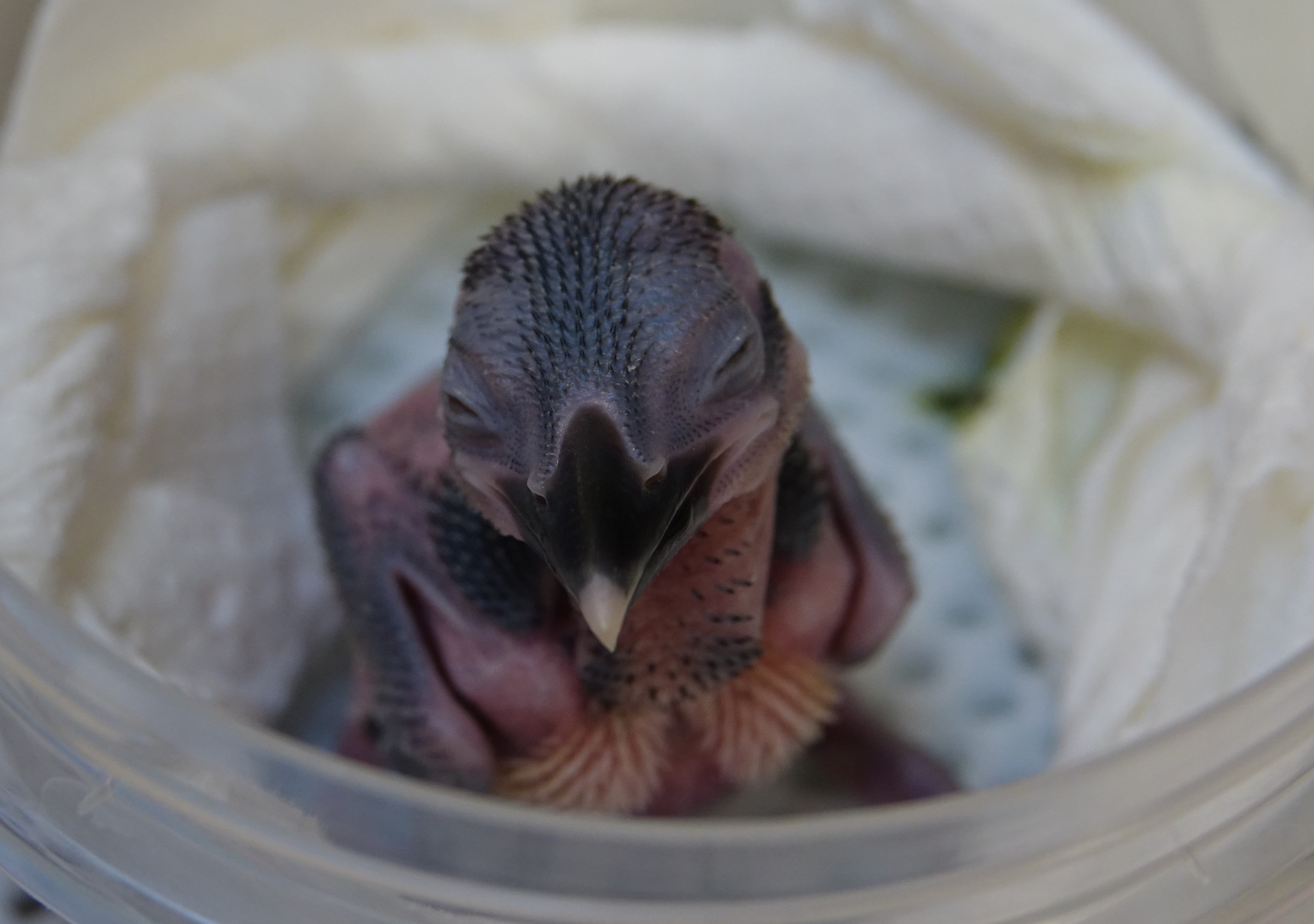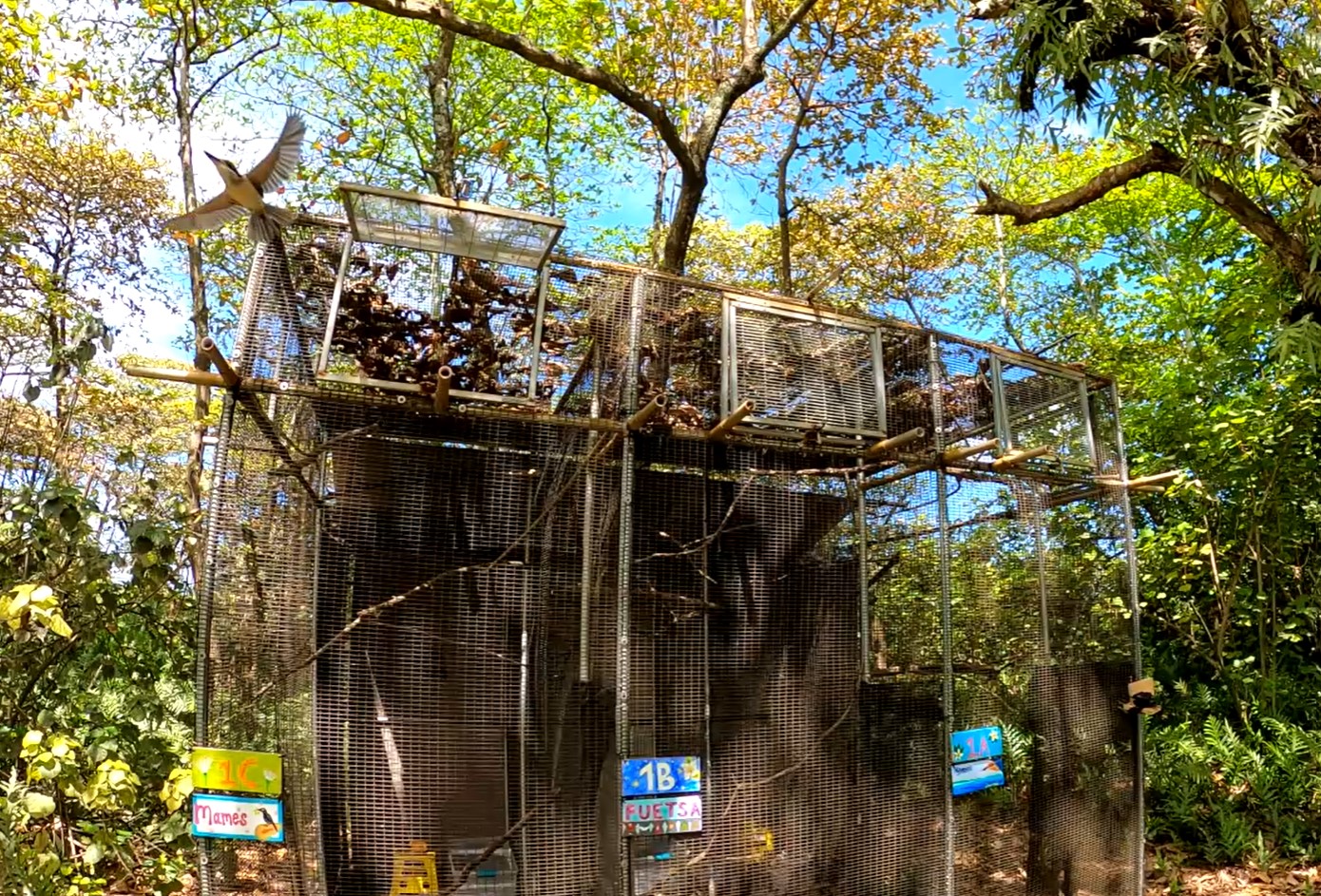Species are being lost from the wild at an unprecedented rate, and some of the most threatened ones are being protected by conservation projects that either work with or employ local people in the area where the species remains and use ex-situ conservation practices (outside of the species’ natural habitat) to protect species that can no longer remain in the wild. One example of this is the conservation success story of the Guam kingfisher.
The beautiful orange and blue Guam kingfisher (Todiramphus cinnamominus), also known as the sihek, has been extinct in its wild home of Guam and the surrounding islands since 1988. This is largely down to predation of the birds by an invasive species: the brown tree snake (Boiga irregulars).
Fortunately, ex-situ populations of these birds were rescued as the population started to dwindle. The program started with 29 sihek and became an established program that currently boasts 127 adults in 25 different institutions. Now a total of six birds, which have been hand reared, have been released from their temporary aviaries back into the wild for the first time in nearly 40 years.

All the birds have been cared for and hand-reared by humans since they went extinct.
Image Credit: (c) ZSL
The sihek started their journey back to the wild from Wichita, Kansas, USA to temporary accommodation at The Nature Conservancy on Cooper Island within the Palmyra Atoll at the end of August. The birds were cared for by specialists who made sure the birds were settled and acclimatized to their new home. A health check was also performed on each bird, and a radio tracker fitted to the team can monitor where they travel to.
Scott Newland, President & CEO of Sedgwick County Zoo, said in a statement seen by IFLSciece: “AZA partners have proudly maintained the Sihek population in human care since 1988. Without the dedication of our aviculturists and the support of zoos, this release would not have been possible. Our work with this species has provided us with valuable knowledge, allowing us to tailor this release to give the birds the best chance for success. For AZA, this release represents the culmination of nearly 40 years of collaboration, research, and dedication aimed at seeing the Sihek flying back on Guam one day.”
The Palmyra Atoll was chosen because it is especially protected – not just by being a US Fish and Wildlife Service National Wildlife Refuge, but also by being part of the Pacific Remote Islands Marine National Monument. Crucially, the island is also invasive predator-free, with the aim that the kingfishers will establish a thriving healthy population here, with the ultimate goal of being reintroduced back on the island of Guam once the issue of the snakes has been addressed.

It is hoped the birds will establish their own breeding population and one day return to Guam
Image Credit: (c) Smithsonian NZCBI
Some birds have yet to reach the milestones needed for release, with there being nine in total including the six that have been released. The team plan to release more birds every year, with the goal to establish ten breeding pairs that can help increase the population.
“This is a momentous day that has been decades in the making. Wildlife globally is under threat, and the success of seeing these birds fly in the wild once more highlights just how zoos, scientists and conservationists – working with governments and decision-makers – have the power to protect species and take huge steps in bringing them back from the very brink of extinction.” said Professor John Ewen, from ZSL’s Institute of Zoology and Sihek Recovery Program Team Chair.
Source Link: Hand-Reared Guam Kingfishers Released After Being Extinct In The Wild Since 1988